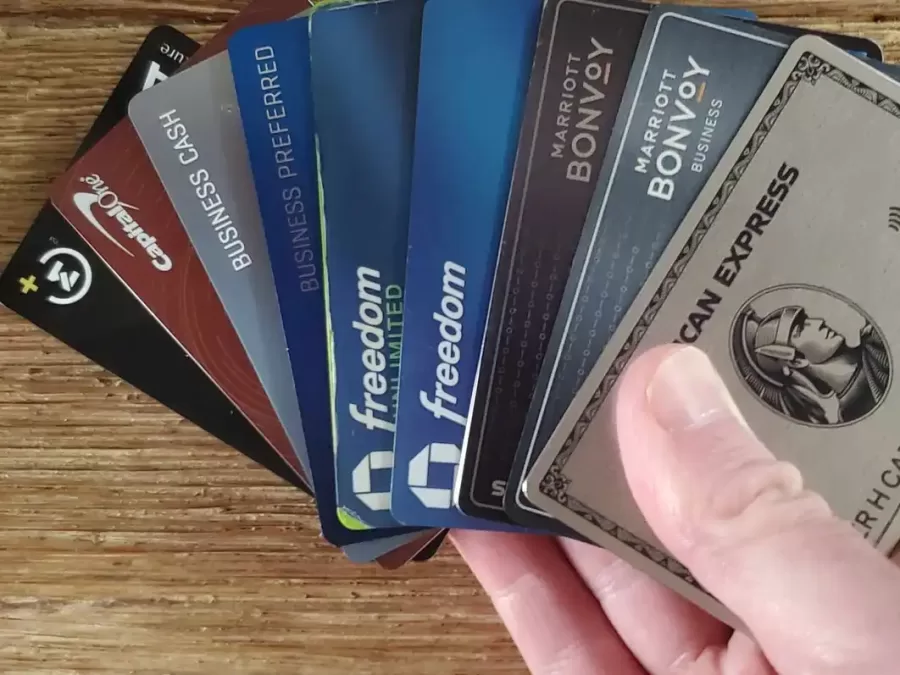I was recently traveling with coworkers for an onsite,1 and the value of my credit card game immediately came up. As I arrived to the hotel we were all staying at, they were all sitting in the lobby, so I sat down to join them and catch up. After a few minutes, I say “well, I am going to go get checked in and drop my stuff off in my room.”
“Don’t bother,” a coworker replies back. “Rooms aren’t ready yet.”
“Well, there’s no line, so let me just go and see,” I reply, trying to hold back a smirk.
I go up, and sure enough, my room is ready for me. As I walk past my coworkers waiting in the lobby, they laugh as they know I am into what I dub “the credit card game,” and they shake their heads as I go and get cleaned up so I don’t look (and smell) like I just traveled earlier that morning before we go hang out with our larger organization later that day.
OK, Straker, nice flex 💪. I promise that flexing is not my intent. Rather, I am using this one small anecdote to explain why you should play the credit card game too. The first pushback I always get when explaining the game to folk is “that sounds like a lot of work.” And while it is work – there’s no denying that – it pays for itself, both literally and with added convenience and flexibility. From trip interruption insurance, to lounge access with free food, to lost baggage insurance, to rental car insurance, to flexible check-in/check-out times, to being able to change hotels within the same brand for free due to last-minute weather changes –
OK, we get it. Yes, there are a lot of benefits to make travel a less stressful experience. And yes, things do go awry.
You also mentioned “literal” payment. Yup! I estimate I get $15,000-$25,000 of “free” travel/year through credit card rewards.2 Now, if you subtract the annual fees of credit cards, the number will be reduced, but not by much relative to the benefit, and the amount of “free travel” remains above $10,000/year when doing so.3
OK, say I am interested…where do I start? Well, I will start a series around different credit card systems here on my blog. Yes, this is still a blog about the software industry primarily. No, do not expect me to only write about one topic in any particular order; I do this in my spare time and write about what I am inspired to write about in the moment. While this post is more of an “intro post” to this new series, I need to kick off with some finance 101 before I start diving into the credit card game itself.
What if I have credit card debt already?
Then you have to deal with this debt first. The first rule of the credit card game is that if you ever carry a balance, no matter how small, for a single month – stop. Take all of the cards out of your wallet, put them in a drawer, and do not continue playing until you are not paying a penny in monthly interest payments.
But how do I get out of such debt? See this follow-on post of mine ![]() Debt Hack: Use Credit Cards to Payoff Credit Cards. Payoff all debt before playing the credit card game.
Debt Hack: Use Credit Cards to Payoff Credit Cards. Payoff all debt before playing the credit card game.
Is using credit cards a financially savvy move?
If you’ve done any research online about this, you’ve probably stumbled upon Dave Ramsey (DR). While he is a great resource to get out of debt, he is not a great resource when it comes to, well, anything else. So, right off the bat, I am just going to say that I do not follow his (cult-like) advice, and if you aren’t in credit card debt, his advice simply doesn’t apply to you.
As already mentioned, credit cards can help you save money through rewards and benefits. They can reduce stress due to added protections through extra insurance and warranty extensions. When used properly, they even raise your credit score (potentially significantly) in the long-term, contrary to the urban legend that they do the opposite. This makes sense as your credit score is derived from:
- Payment history: on time payments boost your score, and missed payments lower it.
- Amounts owed, or utilization of said credit: the more credit available and the lower your utilization, the higher your score.
- Length of credit history: the longer the average account has been open, the better your score.
- Credit mix: having different types of credit improves your score. For example, having a mortgage and credit cards. This leads to the counter-intuitive experience of a decreased credit score when you pay off a loan, be it a personal loan, student load, or mortgage loan.
- New credit: if you open too much credit too quickly, this starts to lower your score. However, many credit card companies won’t issue new cards too quickly, preventing this from being a major issue for the credit card game. For example, the Chase 5/24 rule, which only allows you to get at most 5 new credit cards in a 24 month period. You should pace new credit card openings anyway, as you typically need to meet a minimum spend in 3-6 months to get any introductory bonus points.
Understandably, opening a new credit card right now will have mixed results on these 5 variables that make up your credit score. In my experience, the net result of opening a new card is a temporary, small dip to your credit score that recovers after about three months. The size of the dip is relative to how much credit you already have; the more credit you already have, the smaller the dip. So, when you open your first card, expect the dip to be more significant. However, after you’ve opened a few cards, expect the dip to only be 3-10 points (out of the total maximum of 850).
However, after the dip is over, you should expect a slight increase in your credit score compared to before. This is because your payment history of on-time payments improves, your overall utilization improves (as if you payoff every card on time but have more cards, you have a larger amount of overall credit even if your spending stays the same). And after 1-2 years, you should expect an even further increase as your average age of credit improves and the card no longer counts as “new credit.”
So, if you are planning on applying for a mortgage or a loan refinance in the next 3-6 months, hold off on that new credit card. Otherwise, assuming you don’t have existing credit card debt as per rule #1 mentioned above, have fun 🥳.
So…where do I start?
Well, you start with ![]() Chase Ultimate Rewards as per my follow-on post! But first, validate that it makes sense for you to open new credit cards. Even if you are sure you have a great credit score, you should audit your credit report annually (which is free) and see how many credit pulls currently exist on your account so you can be strategic about which card(s) to open when (to stay within Chase’s 5/24 rule, for example).
Chase Ultimate Rewards as per my follow-on post! But first, validate that it makes sense for you to open new credit cards. Even if you are sure you have a great credit score, you should audit your credit report annually (which is free) and see how many credit pulls currently exist on your account so you can be strategic about which card(s) to open when (to stay within Chase’s 5/24 rule, for example).
If you Google search “Free Credit Report,” you will be overwhelmed with a barrage of sites (including untrustworthy ads at the top 😡). I trust and recommend the US government’s recommendation.
Footnotes
- Because in a remote company, we travel for onsites, not offsites 🙃. ↩︎
- I even once saved over $15,000 on a single trip with my wife (flying business class around the world, predominantly on Emirates). ↩︎
- Admittedly, this number is higher due to redeeming points for business/first class tickets, which are higher cost than something I would pay cash for myself. However, such tickets tend to be thousands of dollars more expensive but not that many more credit card points. This results in strong “points redemption valuations,” where a single point – usually only worth a penny – could be worth as much as 15 cents! ↩︎
Unaffiliated with text: yes, the featured photo here is a real picture of just some of my cards. However, only a few are in my wallet – many are useful but do not need to be carried for daily use!



3 Comments
Leave your reply.